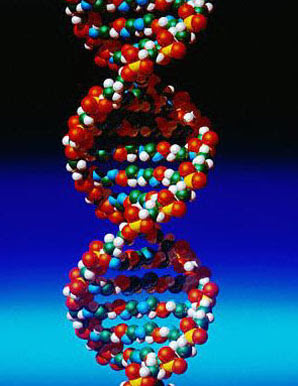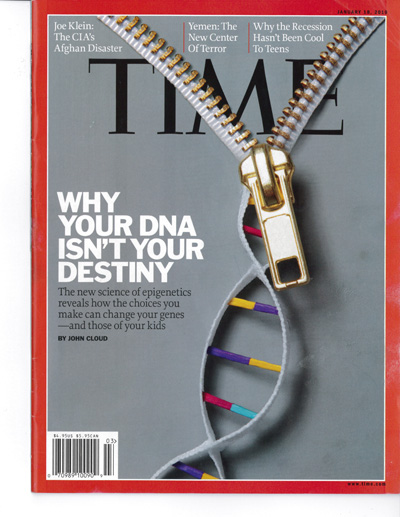February 1, 2016
 It has come to our attention at TMR that there is at least one “science blogger” claiming “we’ve actually found the one thing” that causes autism. “A University of North Carolina researcher actually found the gene that causes autism,” she says, and to back up her claim, which certainly needs backing up, she links this article which references this study.
It has come to our attention at TMR that there is at least one “science blogger” claiming “we’ve actually found the one thing” that causes autism. “A University of North Carolina researcher actually found the gene that causes autism,” she says, and to back up her claim, which certainly needs backing up, she links this article which references this study.
I have to say I was pretty shocked to read that because, as far as I knew, the last word on genes and autism was that there were hundreds, maybe even more than a thousand different genes that could all play incremental roles in autism risk, rendering the idea of “an autism gene” meaningless. Imagine my surprise, then, to see that researchers had indeed “found the gene that causes autism,” and I hadn’t even heard about it! I wondered how on earth I could have completely and utterly missed this momentous news as I generally receive multiple private messages about any new autism study, and I’ve usually read the study by the time I get the messages.
Turns out, I didn’t miss anything after all. Whew! In fact, I had read the referenced article when it was published and found it very interesting.
If you go to the link, you’ll see that University of North Carolina researcher, Mark Zylka, PhD, found a mutation to one particular gene that governs the activity of an enzyme called UBE3A. The mutation keeps the enzyme from switching off, meaning the enzyme’s “regulatory switch was broken.” The excess UBE3A activity does seem likely to cause autism, because in mice it increased dendritic spines on neurons and “too many dendritic spines have been linked to autism.” In the article, Zylka offers the example of a single child whose autism appears to have been caused by this gene mutation, a mutation that neither of his parents has.
However, the very first paragraph of the article specifically states:
Last December, researchers identified more than 1,000 gene mutations in individuals with autism, but how these mutations increased risk for autism was unclear. Now, UNC School of Medicine researchers are the first to show how one of these mutations disables a molecular switch in one of these genes and causes autism. (emphasis mine)
In other words, this article was about how one of over a thousand genes may be able to cause autism.

And, in case you missed it in the first paragraph, Zylka is quoted a little further down as saying,
‘Genetic studies are showing that there will be about 1,000 genes linked to autism. This means you could mutate any one of them and get the disorder. We found how one of these mutations works,’ said Zylka, senior author of the Cell paper and member of the UNC Neuroscience Center. (emphasis mine)
Ironically, the “science blogger”offered this article to refute the idea that multiple complex interactions could cause the neurological condition we call autism, when it’s clear that the article itself supports the idea instead. It becomes even more clear if you consider where these gene mutations are coming from. The article doesn’t say much on the subject other than that the autistic child who has this particular mutation did not inherit it from either of his parents, making it a “de novo” mutation.
According to the National Institutes of Health, “Genetic changes that are described as de novo (new) mutations can be either hereditary or somatic.” Somatic mutations are mutations that are acquired. Since de novo mutations do not exist in the parents, they have to be “acquired” at some point – by the egg, sperm, or embryo. The National Institutes of Health says of somatic mutations, “These changes can be caused by environmental factors such as ultraviolet radiation from the sun, or can occur if a mistake is made as DNA copies itself during cell division.”
So . . . any combination of a thousand genes may be mutated, possibly due to environmental factors, and might result in autism. If that pointed to a “single cause” of autism, that single cause wouldn’t be “a gene”; it would have to be an environmental factor, wouldn’t it?

Of course, we at TMR don’t actually believe there is one environmental factor affecting all those thousand genes, or causing every case of autism. That would be more than a little far-fetched and isn’t borne out by observation as there is no single exposure that every person with autism shares. And this article about another study that seems to be more relevant to the majority of people with autism (“There are many different ways of getting autism, but we found that they all have the same downstream effect”) says that, in autism, genes involved in inflammation of microglial cells in the brain are “turned on.” In other words, the biggest difference between people with autism and people who are neurotypical may not be the genes themselves, but how particular genes are expressed.
And what kinds of things can alter gene expression? You guessed it, environmental factors. (By the way, it is worthwhile to note that inflammation of the microglia is an immune reaction intended to clear away pathogens.)
What is perhaps even more ironic is that the “science blogger” claimed to be correcting “misinformation.”
This is why we at TMR suggest — nauseatingly ad infinitum — that you always read the links and the science for yourself when it’s available, because you can’t count on anyone, including (especially?) “science bloggers,” to interpret and characterize the material correctly. Of course it’s hard to know with mistakes like this one whether the “science blogger” really has such poor reading comprehension when it comes to science or, for whatever reason, is being intentionally misleading. Either way, you owe it to yourself and your children to do the work.
And anyone who cares about your health and that of your children will say the same.
~ Professor
For more by Professor, click here.

















Unless the person has a severe genetic defect with very high penetrance, it seems to me that the genetic approach to trying to understand most cases of autism is similar to using quantum mechanics to understand how a ball moves when somebody throws it. It would be theoretically possible to analyze a ball’s movement using quantum mechanics but it is highly doubtful that it would give you any insight and any understanding you might get would be almost useless if in fact the quantum mechanics analysis excluded any information on a bat which was about to hit the ball.
Similarly in autism one can make a statement that a particular set of a hundred or thousand genes are involved based on a statistical analysis of the genomes of some huge sample set. While these genetic analyses may sound impressive, it seems to me that most are not very useful as they are needlessly complex and they leave out the environment (the bat in the analogy above). It seems a much more practical approach would be to recognize that autism is typically a disease that involves both genetic and environmental factors which results in dysfunctional biochemistry. That biochemisty typically consists of high oxidative stress, sulfation deficits, methylation deficits, and sometimes autoimmunity. With this as a starting point, scientists should start run trials to see what therapies can positively affect this dysfunctional biochemistry and relatedly improve behavior and quality of life.
Well said, Seth!
I liked the comment about the “exquisite precision” of science and the inference that it can lead one astray. I remember in graduate school, reading a quote that has always stayed with me, but I don’t remember who said it: “He learned more and more about less and less until finally he knew everything about nothing.” I thought it was hilarious at the time, and it seemed to encapsulate what grad school was all about. Not all my classmates were amused. But then, science is serious business, don’t you know. : - )
I LOVE that, Aimee! Thank you.
As usual, they never talk about effects of environmental factors. Thanks for this information.
VACCINE QUIZ: This will wake up everyone who takes it…Fantastic!
https://www.qzzr.com/c/quiz/158296/test-your-vaccine-knowledge
Posted by: Danchi | February 02, 2016 at 10:28 AM
Thank you, Professor! A good reminder of how easily misinformation can be accepted by those that want to believe it!
How is the small picture at the top relevant ? lol
Mark Zylka is just making a fool of himself .
Hans, surely you have read enough of our blogs to know that the small picture in the upper left corner is the avatar for the writer. That small picture appears on every one of my blogs, except the ones that are for APRC.
And Mark Zylka is doing his science job quite well. He is a perfect example of the “exquisite precision” of science that Martha Herbert talks about, where you can get up so close to the subject that you know everything about a single detail but completely miss the big picture. What is the likelihood that this ONE gene mutation has much applicability to the lives of a significant portion of people with autism? Probably shockingly low, but that doesn’t mean that from the Simons Foundation’s point of view that it wasn’t worthwhile research to do. The challenge for those of us who care about people with autism and their families, and heck, the rest of the country who will be burdened by the costs of caring for them while dealing with their own versions of “autism lite” like ADHD and sensory processing disorder, is to get high-quality high-level research funded that will provide important direction in actually changing the course of chronic illness.